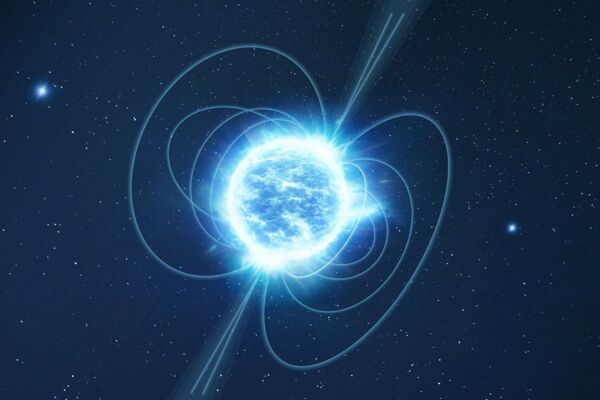Through the Hubble Space Telescope of the National Aeronautics and Space Administration (NASA), astronomers have discovered an unidentified magnetar traversing the Milky Way galaxy. This celestial body possesses an incredibly strong magnetic field, often portrayed as a source of superpowers in superhero movies or comics.
According to a press release by NASA on April 15th, the magnetar, named SGR 0501+4516, is journeying through our galaxy from an unknown origin point. It is deemed highly unlikely to have originated from a supernova explosion as initially predicted for magnetars in the Milky Way.
Leading the research, Ashley Chrimes, a researcher from the European Space Agency (ESA), explained, “Magnetars are a type of neutron star, the remains of stars after their death, composed entirely of neutrons. They are incredibly dense and heavy, compressing electrons and protons that make up atoms into neutrons.”
Chrimes further highlighted the unique aspect of magnetars lies in their powerful magnetic fields, billions of times stronger than the strongest magnets on Earth.
NASA illustrated that if a magnetar were to fly over Earth at a distance half that between the Earth and the Moon, its intense magnetic field would obliterate every credit card on the planet. Should a human enter within 600 miles (966 kilometers) of a magnetar, it would become a death ray straight out of science fiction, tearing apart every atom in the body.
With assistance from the Hubble Space Telescope and ESA’s Gaia Space Telescope, researchers identified peculiarities of SGR 0501+4516.
Astronomers initially observed intense gamma-ray flashes at the edge of the galaxy in 2008 using the Neil Gehrels Swift Observatory by NASA, later confirmed to originate from SGR 0501+4516, one of approximately 30 known magnetars in the Milky Way.
Considering magnetars as neutron stars, astronomers initially believed they form from supernova explosions where a star collapses due to gravity into a highly dense neutron star post-explosion. SGR 0501+4516 is situated near a supernova remnant named HB9, indicating its probable formation.
However, after a decade-long study of SGR 0501+4516 through the Hubble Space Telescope, astronomers began to question this theory. Observations in 2010, 2012, and 2020 using the Hubble Space Telescope aligned with findings from the Gaia Space Telescope, revealing subtle movements of the magnetar as it traverses the sky.
By tracking the position of SGR 0501+4516, astronomers measured its movements while crossing the sky. The speed and direction of its motion indicate the magnetar may not be associated with the nearby supernova remnants. If it did not originate from a supernova explosion, it likely formed through an alternate mechanism.
Magnetars could have formed through the merger of two low-mass neutron stars or a process known as Accretion-Induced Collapse (AIC). AIC requires a binary star system with one star being a white dwarf. When the white dwarf accretes gas from its companion star, it may grow too massive to support itself, ultimately leading to an explosion or the formation of a magnetar.
Andrew Levan from Radboud University in the Netherlands and the University of Warwick in the UK supplemented the researchers’ findings, suggesting that in some cases, white dwarfs collapsing into neutron stars could be possible post-explosion. This could be the birth process of SGR 0501+4516.
The research team plans to further utilize the Hubble Space Telescope to observe the origins of other magnetars in the Milky Way, aiming to understand how these celestial bodies with extremely powerful magnetic fields form.
The above research findings were published on April 15th in the journal “Astronomy and Astrophysics.”

